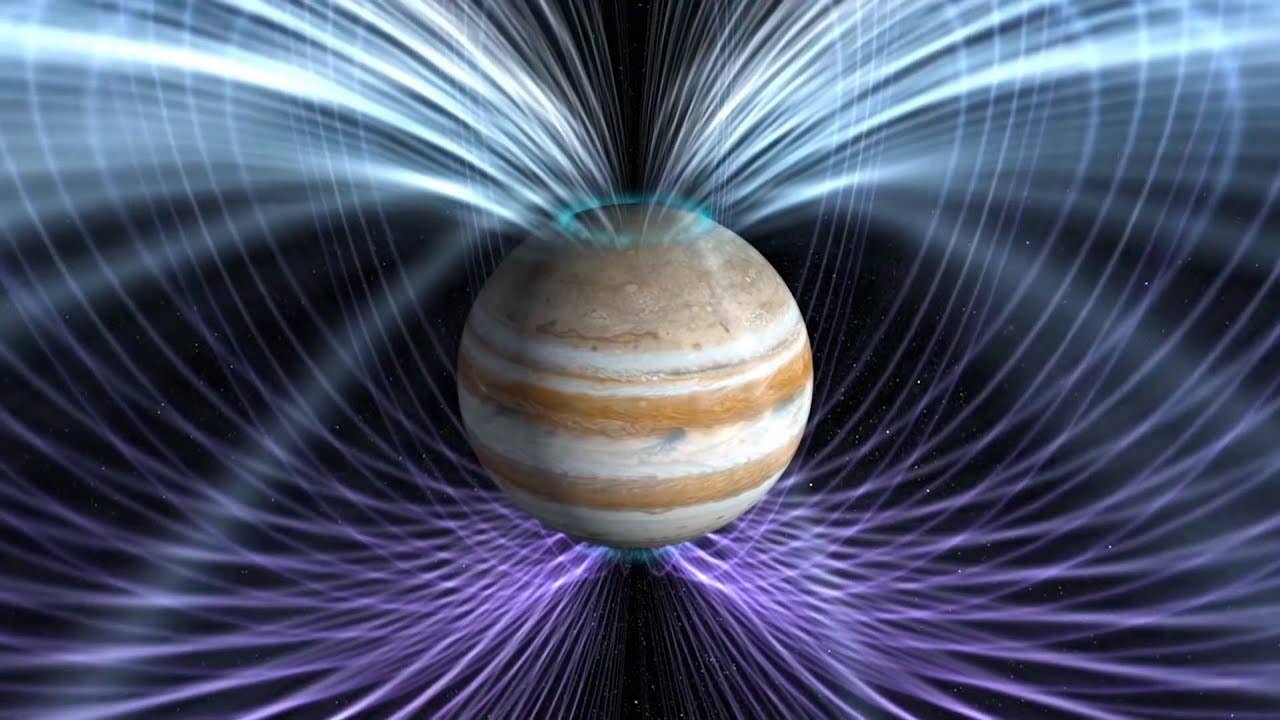Jupiter was once double its current size, study finds
New research reveals dramatic details about Jupiter’s origins, using moon orbits to uncover its massive early size and magnetic power.

Jupiter’s moons reveal its dramatic early history, reshaping our understanding of planet formation. (CREDIT: NASA)
Jupiter, the largest planet in the solar system, has long intrigued scientists seeking to understand its mysterious origins. Recently, researchers uncovered groundbreaking details that shed fresh light on Jupiter’s earliest days, deepening our understanding of how our entire solar system formed.
In an ambitious new study published in Nature Astronomy, planetary scientist Konstantin Batygin from Caltech and physicist Fred C. Adams from the University of Michigan revealed crucial insights about Jupiter’s initial state. They achieved this by analyzing the subtle orbital behaviors of Jupiter’s innermost moons, Amalthea and Thebe.
Moons Unlock Jupiter’s Early Secrets
When the solar system was forming, Jupiter was much larger than it is today. Adams and Batygin discovered that, approximately 3.8 million years after the solar system's first solids appeared, Jupiter’s radius was nearly twice its current size. At that pivotal moment, Jupiter's volume was massive—equivalent to over 2,000 Earths—and its magnetic field was about 50 times stronger than now.
Adams finds it remarkable how clear the past remains: "It's astonishing that even after 4.5 billion years, enough clues remain to let us reconstruct Jupiter's physical state at the dawn of its existence."
Unlike typical approaches, which depend heavily on uncertain assumptions about gas opacity and core composition, the researchers bypassed those uncertainties. Instead, they used direct measurements: the orbital dynamics of Jupiter’s moons and its conserved angular momentum. These measurable factors provided independent and precise data about Jupiter’s size and magnetic properties at a critical juncture in its formation.
Jupiter: Architect of the Solar System
Understanding Jupiter's early state is essential because the planet played a key role in shaping our solar system. Its powerful gravitational force determined the paths of smaller bodies, influencing planetary arrangements we see today.
Related Stories
"Our ultimate goal is to understand where we come from," explained Batygin. "Pinning down the early phases of planet formation is essential to solving the puzzle. This brings us closer to understanding how not only Jupiter but the entire solar system took shape."
Indeed, Jupiter’s impact has long fascinated astronomers. Early theories suggested a simplified picture, where the solar system's evolution hinged primarily on interactions between Jupiter and the Sun. Over decades, as researchers gathered more data, this view became clearer. Jupiter emerged as a defining force, crucial in shaping the solar system's structure.
Core Accretion and Jupiter’s Birth
Most scientists agree Jupiter formed through a process known as core accretion. Initially, a rocky and icy core gathered quickly, creating a strong gravitational pull. This core gradually attracted gas, building a thick hydrogen and helium atmosphere.
Eventually, Jupiter’s gas envelope grew rapidly, accumulating most of the planet’s current mass. After reaching a critical size, Jupiter separated from the surrounding nebula—a cloud of gas and dust—and began its long, slow cooling process.
Early models by Dave Stevenson, a prominent planetary scientist from Caltech, and others laid this foundational understanding. However, these models left uncertainties, especially regarding Jupiter’s initial size, spin, and magnetic strength. Now, Batygin and Adams's study provides clarity by offering concrete measurements of these crucial early characteristics.
Resolving the "Hot vs. Cold Start" Puzzle
One ongoing debate in planetary science centers around Jupiter's initial temperature and how fast it grew—known as the "hot versus cold start" problem. Some theories propose a slow growth, taking millions of years, while others suggest a quicker formation. The new findings clarify the timing, placing Jupiter’s rapid growth around 3.8 million years after the first solids formed.
"What we've established here is a valuable benchmark," Batygin says. "A point from which we can more confidently reconstruct the evolution of our solar system."
These precise measurements came partly from studying Amalthea and Thebe’s slightly tilted orbits. These minor discrepancies provided crucial evidence, allowing researchers to deduce Jupiter's past characteristics without relying on uncertain internal models.
Inside Jupiter: Layers of Mystery
Despite this significant advancement, many questions remain about Jupiter's deep interior. Past missions like Galileo and Juno revealed complex internal layers, including regions filled with helium rain and a dense, diluted core. These discoveries showed that Jupiter’s interior was more intricate than previously understood.
Yet, scientists still debate the exact nature of Jupiter’s innermost core and its chemical composition. Gravitational data alone hasn't fully clarified these mysteries. The hydrogen inside Jupiter also behaves differently under extreme pressure, complicating models further.
Batygin and Adams acknowledge that uncertainties persist about Jupiter’s earliest moments. Nonetheless, their work significantly improves our understanding of these formative years, offering a clearer picture of how Jupiter and the rest of the solar system evolved.
As Adams reflects, the solar system’s early imprint remains impressively visible: "It's astonishing that even after 4.5 billion years, enough clues remain to let us reconstruct Jupiter’s physical state at the dawn of its existence."
Ultimately, understanding Jupiter's beginnings does more than just answer curiosity—it reveals a crucial chapter in the broader story of our solar system. With clearer insight into Jupiter’s origins, astronomers can better understand planetary systems around other stars, shedding light on how worlds far beyond our own came to be.
Note: The article above provided above by The Brighter Side of News.
Like these kind of feel good stories? Get The Brighter Side of News' newsletter.



